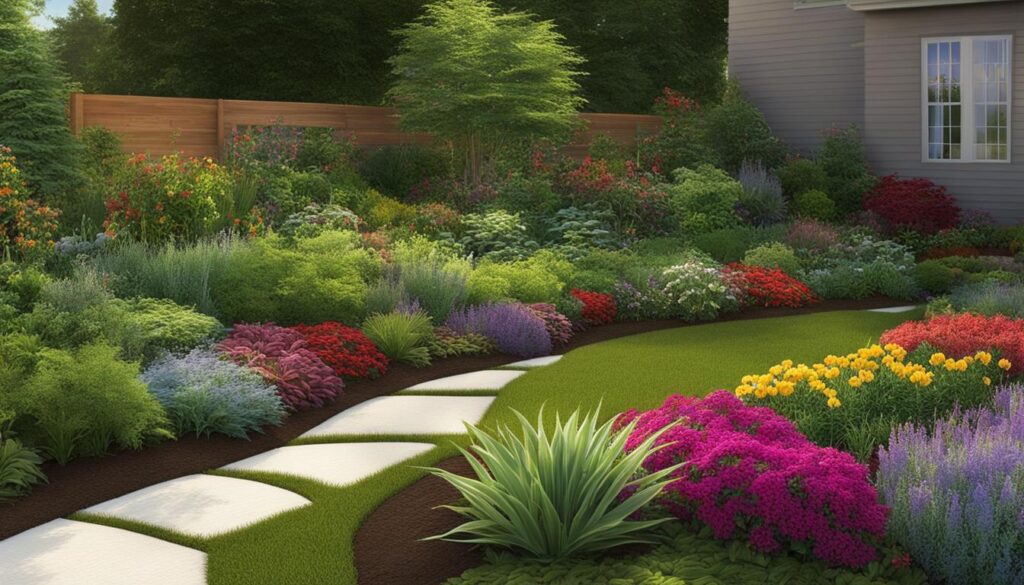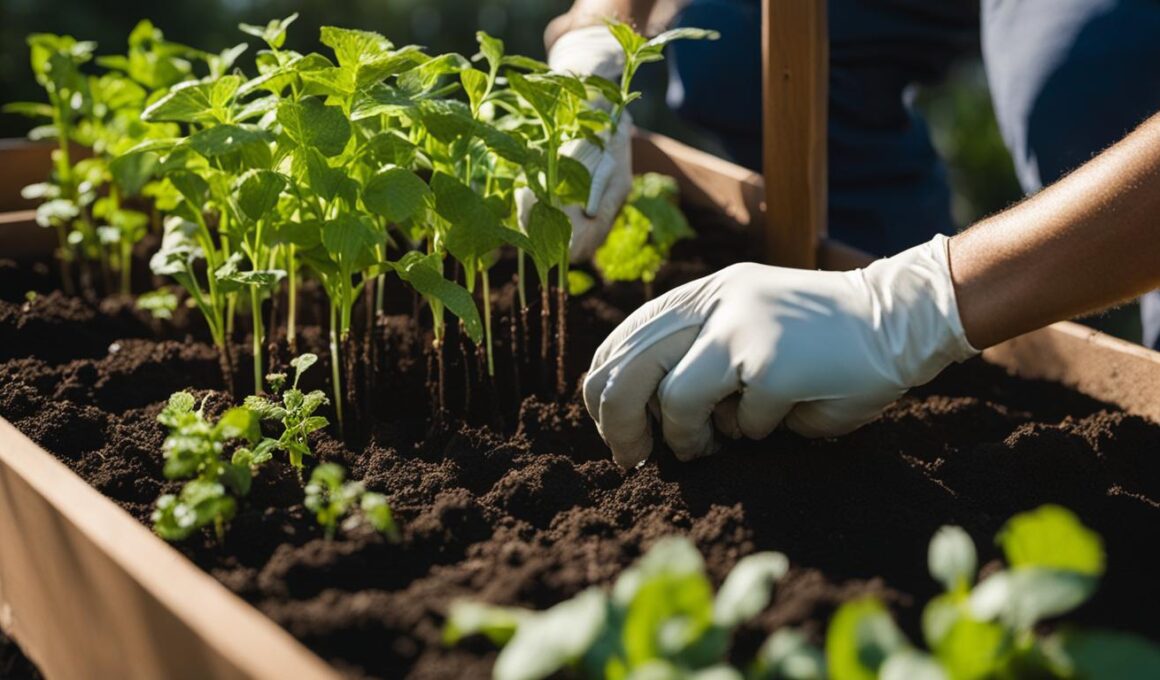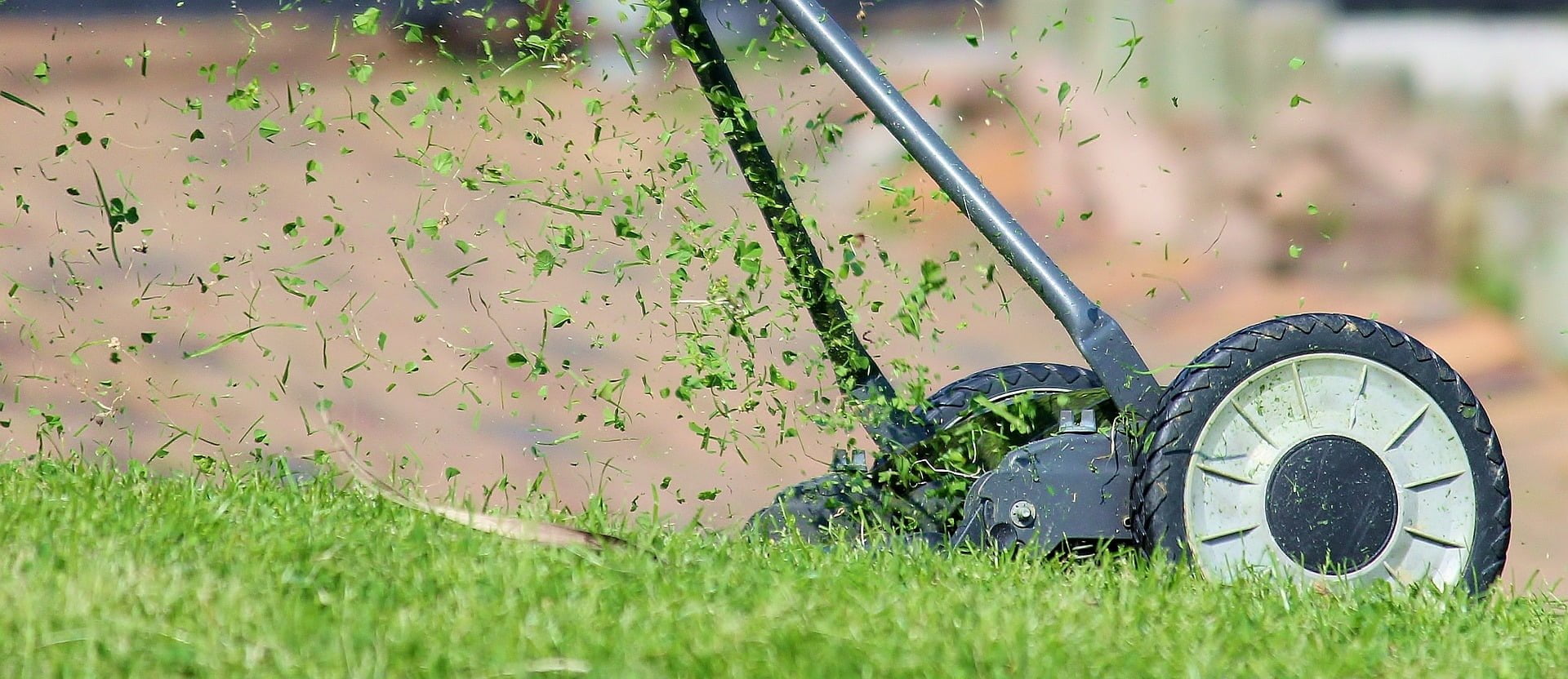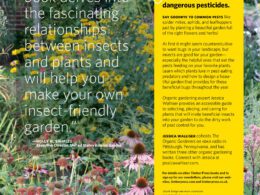When starting a garden in a raised bed, it’s important to find effective ways to remove weeds and maintain a weed-free environment. This article will provide step-by-step instructions on how to naturally kill weeds and grass in raised garden beds without the use of chemical weed killers. By using a simple method involving cardboard, you can block light, kill existing weeds, and create a weedless garden bed for years to come.
Post Summary:- Removing weeds from a raised garden bed helps maintain a healthy and productive garden.
- Avoiding chemical weed killers is beneficial for your health and the environment.
- Using cardboard to kill weeds naturally in raised beds is a simple and effective method.
- Maintaining a weedless garden bed involves adding mulch and preventing weed growth.
- Alternative methods for weed removal include using tools, cover plants, and manual removal.
Why Avoid Chemical Weed Killers
Chemical weed killers, such as Round-up, have long been a popular choice for eliminating weeds and grass. However, it’s important to consider the potential health risks associated with these products. Many people are unaware of the connection between chemical weed killers and cancer, making it imperative to explore alternative methods to maintain a weed-free environment.
Opting for organic and natural approaches to landscape maintenance can help prioritize the safety of your family and the environment. By avoiding chemical weed killers, you can ensure clean soil for growing food and contribute to a healthier planet. Plus, there are numerous effective alternatives available that allow you to create a beautiful and sustainable landscape without relying on potentially harmful chemicals.
The Health Risks of Chemical Weed Killers
Chemical weed killers often contain glyphosate, a controversial herbicide that has been classified as a probable human carcinogen by the International Agency for Research on Cancer (IARC). Research has linked glyphosate exposure to various types of cancer, including non-Hodgkin lymphoma. Furthermore, these chemical products can contaminate soil, water sources, and food crops, posing risks to both human health and the environment.
| Health Risks of Chemical Weed Killers | Benefits of Organic Landscaping |
|---|---|
| Increased risk of cancer | Safe for human health and the environment |
| Contamination of soil, water, and food crops | Promotes biodiversity and natural ecosystems |
| Exposure to harmful chemicals | Reduces air and water pollution |
“Choosing to avoid chemical weed killers is a proactive step towards protecting your family’s health and minimizing your impact on the environment. By embracing organic landscaping methods, you can create a safe and sustainable outdoor space for everyone to enjoy.”
With the knowledge of the health risks associated with chemical weed killers, it’s time to explore natural alternatives that can help you maintain a beautiful, weed-free landscape. By making conscious choices and implementing organic practices, you can create a safer and healthier outdoor environment for yourself, your family, and the wider ecosystem.

Benefits of Organic Landscaping
- Promotes biodiversity and natural ecosystems
- Reduces air and water pollution
- Preserves soil quality and fertility
- Supports beneficial insects and pollinators
- Minimizes exposure to harmful chemicals
Using Cardboard to Kill Weeds Naturally
When it comes to removing weeds from your raised garden bed, using cardboard is a simple and effective method that doesn’t rely on chemical weed killers. By following a few easy steps, you can naturally kill weeds and create a weed-free environment for your plants to thrive.
To start, make sure the grass and weeds in your raised bed are cut as short as possible using a weed whacker. This will ensure that the cardboard can fully block out light and prevent any new growth from occurring. Next, cut the cardboard to fit the size of your bed and layer it on top, making sure to overlap the edges to create a seamless barrier against weeds. Wet the cardboard thoroughly and add something heavy, like rocks or bricks, on top to keep it in place.
The cardboard acts as a barrier, blocking light from reaching the weeds and causing them to die off. Over time, rain and water will break down the cardboard, allowing for natural decomposition and integration into the soil. This method not only kills existing weeds but also prevents new ones from sprouting, creating a weedless environment that is beneficial for your plants.
Step-by-Step Guide to Using Cardboard for Weed Removal
| Steps | Instructions |
|---|---|
| Step 1 | Cut the grass and weeds in the raised bed as short as possible using a weed whacker. |
| Step 2 | Cut the cardboard to fit the size of your bed and layer it on top, overlapping the edges. |
| Step 3 | Wet the cardboard thoroughly and add something heavy on top to keep it in place. |
By using this natural method, you can eliminate weeds from your raised garden bed without the use of harmful chemicals. It’s an eco-friendly and cost-effective solution that creates a weedless space for your plants to grow and flourish.
Maintaining a Weedless Garden Bed
To ensure your raised garden bed remains weed-free, proper maintenance is crucial. Implementing a few key strategies will help you create a healthy and thriving garden that is free from invasive plants.
Adding Mulch
One of the most effective ways to prevent weeds from taking root is by adding mulch on top of the cardboard base. Mulch acts as a protective barrier, smothering any potential weed growth and preventing sunlight from reaching the soil. Choose an organic mulch such as wood chips or straw, which will gradually break down and enrich the soil.
When applying the mulch, make sure to layer it to a thickness of at least 2-3 inches, covering the entire surface of the bed. This will not only suppress weed growth but also help retain moisture in the soil, reducing the need for frequent watering.
Filling in Bare Spots
To further discourage weed growth, it’s important to fill in any bare spots in your garden bed. Weeds tend to thrive in open spaces, so by planting flowers or spreading additional mulch, you can create a dense and lush garden that leaves no room for invasive plants to establish themselves.
Installing Edging
Installing edging around the border of your raised garden bed can be an effective way to maintain a weed-free environment. Edging helps keep the mulch in place, preventing it from being washed away during heavy rain and also acts as a physical barrier to prevent grasses from encroaching on your garden bed.
| Pros | Cons | |
|---|---|---|
| Mulch | – Suppresses weed growth | – May require regular replenishment |
| Planting flowers | – Adds visual appeal | – May require regular maintenance |
| Edging | – Helps maintain defined borders | – Requires installation |
By following these maintenance practices, you can enjoy a beautiful and weed-free garden bed throughout the growing season. Remember to regularly inspect your raised bed for any signs of weed growth and take prompt action to address any issues that arise. With proper care, your garden bed will thrive and provide you with bountiful harvests.

Alternative Methods for Weed Removal
While using cardboard is an effective way to kill weeds in raised garden beds, there are other methods you can employ to ensure a weed-free environment. Here are a few alternative approaches to weed removal:
Hoeing
Using a hoe is a traditional and efficient method for dispatching small and shallow-rooted weeds without the need to crouch or kneel. Simply position the hoe blade just beneath the soil surface and move it back and forth to sever the weeds from their roots. Be sure to hoe regularly to prevent weeds from establishing deep root systems.
Cover Plants
Another way to control weeds in your raised garden bed is by planting cover plants. Cover plants like clover can compete with weeds for resources, effectively choking them out. These plants also serve as a natural ground cover, creating a barrier that prevents weed seeds from germinating. Consider incorporating cover plants into your garden bed to maintain a weed-free environment.
Digging
For stubborn weeds with deep or dense root systems, digging them out may be the best solution. Use a forked weeding tool or a garden knife to carefully remove the entire weed, including its roots. Take care not to disrupt the soil structure or disturb the surrounding plants. Always add additional topsoil if necessary to ensure a healthy foundation for new plantings.
By employing these alternative methods for weed removal, you can effectively maintain a weed-free raised garden bed without the use of chemical weed killers. Choose the method that works best for you and your garden, and enjoy the benefits of a clean and thriving growing space.
Embracing Weeds or Seeking Professional Help
While weeds are often seen as a nuisance in the garden, it’s important to remember that some weeds can actually have their benefits. In fact, certain weeds are edible and can be harvested for culinary purposes. One example is purslane, which is rich in omega-3 fatty acids and can be enjoyed in salads or cooked as a vegetable. Dandelion greens are another edible weed that is packed with nutrients and can be used in salads, soups, or stir-fries. By embracing these edible weeds, you can not only reduce waste but also enjoy the unique flavors they offer.
Aside from their culinary potential, some weeds can also add visual interest to your yard. Certain wildflowers, for example, can provide vibrant bursts of color when contained in a designated area. This can be especially appealing if you’re looking to create a more natural and organic landscape. Planting native wildflowers can also attract pollinators to your garden, helping to support biodiversity and contribute to a healthier ecosystem.
However, if you find that the weed problem in your raised garden bed becomes overwhelming or you simply prefer not to do the work yourself, seeking professional help is always an option. Professional yard clean-up services can help clear out the weeds and give you a clean slate to work with. They have the expertise and tools to efficiently remove weeds and restore the beauty of your garden. Additionally, they can provide advice on how to prevent future weed growth and maintain a weed-free environment.
Ultimately, whether you choose to embrace certain weeds or seek professional help, it’s important to find a solution that works best for you and your garden. By considering the potential benefits of edible weeds and the visual appeal of wildflowers, you may discover new ways to appreciate these often-misunderstood plants. Alternatively, if you prefer a more hands-off approach or require assistance in managing your garden, professional yard clean-up services can help take care of the weed problem effectively. Whichever path you choose, maintaining a clean and beautiful raised garden bed is within reach.
Can I Use the Same Cleaning Method for Garden Gloves as I Do for Removing Weeds from a Raised Garden Bed?
When it comes to maintaining your garden, it’s important to know how to appropriately wash garden gloves. However, using the same cleaning method as you do for removing weeds from a raised garden bed might not be effective. Garden gloves can be delicate, so handwashing them with mild detergent is recommended to preserve their quality.
Conclusion
Removing weeds from your raised garden bed is crucial for maintaining a healthy and productive gardening space. Instead of relying on chemical weed killers that come with potential health risks, there are natural methods you can use to achieve a weed-free environment.
By utilizing materials like cardboard and mulch, you can effectively block light and smother weeds, preventing them from taking root and competing with your plants. Maintaining your weedless garden bed requires regular mulching and filling in any bare spots, as well as installing edging to prevent grasses from encroaching.
If you prefer alternative methods, you can use tools like hoes or weeding tools to manually remove small or deep-rooted weeds. Additionally, planting cover plants like clover can help suppress weed growth while adding beauty to your garden. In cases where the weed problem becomes overwhelming or you prefer not to do the work yourself, professional yard clean-up services are available to give you a clean slate.
With these natural methods and options, you can enjoy a weed-free raised garden bed and maximize the potential of your plants. Take the necessary steps to maintain a clean and beautiful gardening space, and you’ll be rewarded with a thriving garden that is free from unwanted weeds.
Can Japanese Tea Gardens Benefit from Raised Garden Beds for Weed Control?
Raised garden beds can be a great addition to Japanese tea garden ideas for effective weed control. By raising the planting area, it becomes easier to manage weed growth and maintain the aesthetic appeal of the garden. Consider integrating raised garden beds to enhance the overall experience of the Japanese tea garden.
FAQ
Why should I avoid chemical weed killers?
Chemical weed killers come with potential health risks and are linked to cancer. Choosing to avoid these chemicals prioritizes the safety of your family and the environment.
How can I use cardboard to kill weeds naturally in raised beds?
Cut the grass and weeds in the raised bed as short as possible, then cut cardboard to fit the boxes and layer it. Wet the cardboard and add something heavy on top to keep it in place. The cardboard blocks light, causing the grass and weeds to die over time.
How can I maintain a weedless garden bed?
Add mulch on top of the cardboard to smother any new weeds. Filling in bare spots with flowers or spreading mulch over the entire bed can prevent weeds from taking root. Installing edging around the border of the bed can also help keep grasses from creeping in.
What are alternative methods for weed removal?
Using a hoe can quickly dispatch small weeds. For weeds with deep or dense root systems, use a forked weeding tool or garden knife. Planting cover plants like clover can choke out weeds. Manual removal by pulling or digging can be effective, though it may require additional topsoil.
Are some weeds actually beneficial?
Yes, some weeds like purslane and dandelion greens are edible. Certain wildflowers can also add visual interest if contained in a designated area.
Can I seek professional help for weed removal?
Yes, professional services for yard clean-up are available to clear out the weeds and give you a clean slate if you prefer not to do the work yourself.








